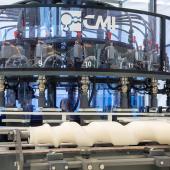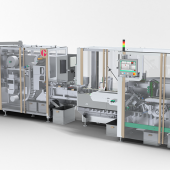Consumers in mind
RIGID PLASTIC PACKAGING A constantly evolving offer, mastery of all technologies, proximity to the customer, a series of strategic acquisitions: on the strength of these virtues, the RPC group re-launches its entire operation, starting in pharma and high value sectors. What’s driving it? “Green” innovation and high service content for the end user.
Consolidating its core business and, at the same time, investing in products with high added value and in the most promising markets: this is the two-pronged strategy guiding the RPC group in building its future. A future which relies on a (singularly plentiful) variety of plastic packaging with high innovation and service contents, made using all possible combinations of the three converting techniques: injection-moulding, blow-moulding and thermoforming.
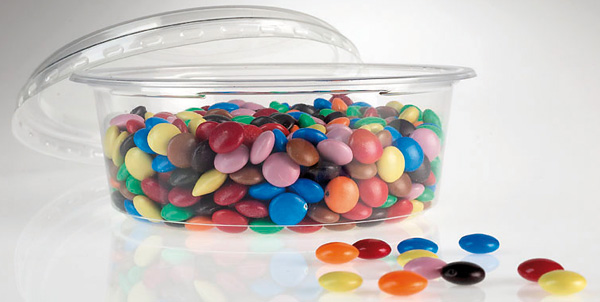
It was Pim Vervaat, the group’s new Chief Executive, who recounted the British multinational’s journey to a large audience of journalists gathered for the occasion in the RPC Bramlage-Wiko technology center in Lohne (D).
Highlights of this journey have been some important acquisitions (after Continental Plastics Europe, divisions of Rexam and Nampak and, in 2011, the Danish Superfos) and the development of in house lines aimed at consolidating the group’s presence in the global rigid plastic packaging market, which according to Pira estimates based on 2011 data, amounts to 659 billion dollars and is growing at an annual rate of 3.3%.
RPC is equally committed to the sectors of food (58%) and non-food (42%): the former, with 7-11% shares, is primarily represented by milk & dairy, extended shelf life products, and coffee and creams; the second by pharmaceuticals (4%), paints and varnishes (9%), personal care (12%) and other non-food products (17%). The values sketch the profile of a large group with 50 facilities in 18 countries and 7,300 employees, an annual turnover of 1.1 billion pounds and a market presence that covers most regions of the world.
The main drivers of this dynamicity are the very properties of the materials used, which are particularly effective in reducing the weight and thickness of containers, and consequently also their carbon footprint, in converting multilayer packaging into less complex and easier to recycle structures and in guaranteeing a high barrier to factors that compromise the shelf life of fresh and delicate products. These are properties which, RPC’s marketing team projects, will sustain the growth of plastic to the detriment of metal and glass, especially for preserves and canned foods, soups, sauces and similar products, pet food and baby food.
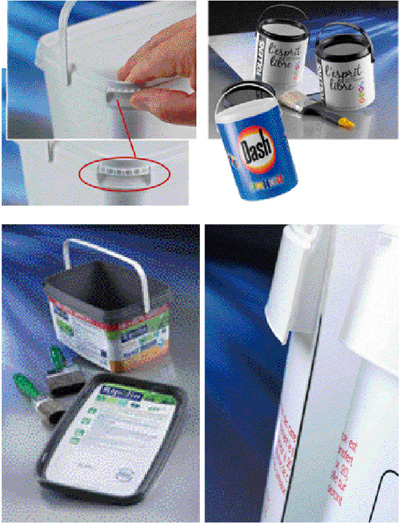 Growing in the world
Growing in the world
Resting on these foundations are RPC’s projects aimed at optimizing its business in Europe and developing with equal commitment both in the “old” markets and in the new ones, first of all by developing product lines with greater added value (which already represent 31% of consolidated turnover) and sustainable packaging.
For RPC - as was explained at the press conference - optimization translates to a series of measures relating first of all to Europe-wide thermoforming and injection-moulding operations. In particular, the plan involves modernization of production sites, possibly the closing of some (Antwerp in Belgium, Beuningen in the Netherlands) and selling off of companies at the margins of the group’s core business, while at the same time focusing on more profitable product lines. According to the group’s estimates, the growth margins are ample, both in the first world and in the more quickly developing economies, as long as the necessary synergies are activated, and most importantly, as long as it knows how to interpret/anticipate users’ needs. One example is the acquisition of Superfos, which enabled the RPC group to grow One example is the acquisition of Superfos, which enabled the RPC group to grow even further in both food and non-food sectors including the dynamic market of barrier packaging, for which it has developed innovative multilayer products. And now the group plans similar operations in other sectors, starting with pharmaceuticals.
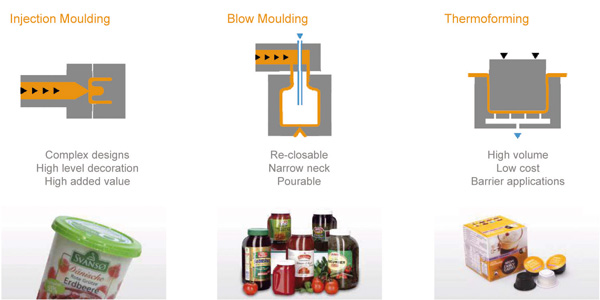
RELATED ARTICLE: LOOKING TO THE FUTURE












